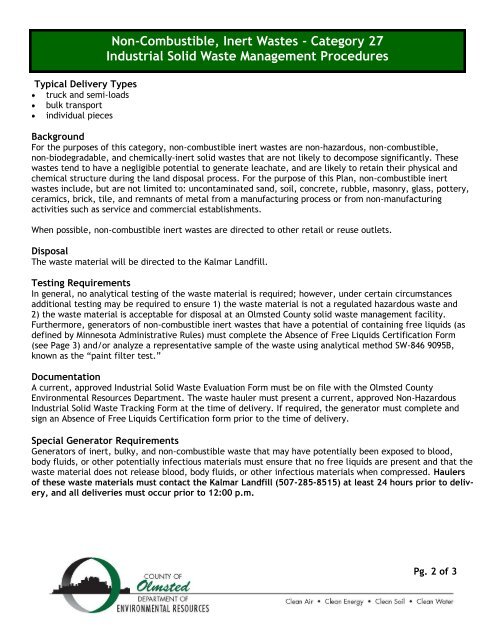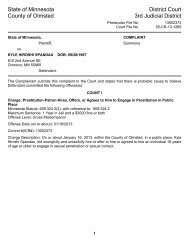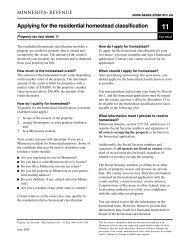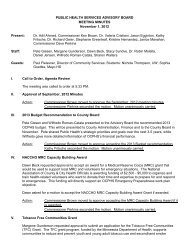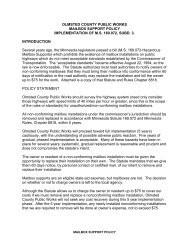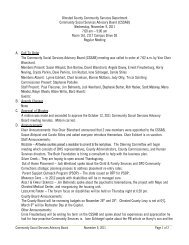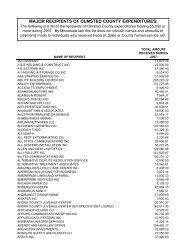Non-Combustible, Inert Wastes - Olmsted County
Non-Combustible, Inert Wastes - Olmsted County
Non-Combustible, Inert Wastes - Olmsted County
Create successful ePaper yourself
Turn your PDF publications into a flip-book with our unique Google optimized e-Paper software.
<strong>Non</strong>-<strong>Combustible</strong>, <strong>Inert</strong> <strong>Wastes</strong> - Category 27<br />
Industrial Solid Waste Management Procedures<br />
Typical Delivery Types<br />
truck and semi-loads<br />
bulk transport<br />
individual pieces<br />
Background<br />
For the purposes of this category, non-combustible inert wastes are non-hazardous, non-combustible,<br />
non-biodegradable, and chemically-inert solid wastes that are not likely to decompose significantly. These<br />
wastes tend to have a negligible potential to generate leachate, and are likely to retain their physical and<br />
chemical structure during the land disposal process. For the purpose of this Plan, non-combustible inert<br />
wastes include, but are not limited to: uncontaminated sand, soil, concrete, rubble, masonry, glass, pottery,<br />
ceramics, brick, tile, and remnants of metal from a manufacturing process or from non-manufacturing<br />
activities such as service and commercial establishments.<br />
When possible, non-combustible inert wastes are directed to other retail or reuse outlets.<br />
Disposal<br />
The waste material will be directed to the Kalmar Landfill.<br />
Testing Requirements<br />
In general, no analytical testing of the waste material is required; however, under certain circumstances<br />
additional testing may be required to ensure 1) the waste material is not a regulated hazardous waste and<br />
2) the waste material is acceptable for disposal at an <strong>Olmsted</strong> <strong>County</strong> solid waste management facility.<br />
Furthermore, generators of non-combustible inert wastes that have a potential of containing free liquids (as<br />
defined by Minnesota Administrative Rules) must complete the Absence of Free Liquids Certification Form<br />
(see Page 3) and/or analyze a representative sample of the waste using analytical method SW-846 9095B,<br />
known as the “paint filter test.”<br />
Documentation<br />
A current, approved Industrial Solid Waste Evaluation Form must be on file with the <strong>Olmsted</strong> <strong>County</strong><br />
Environmental Resources Department. The waste hauler must present a current, approved <strong>Non</strong>-Hazardous<br />
Industrial Solid Waste Tracking Form at the time of delivery. If required, the generator must complete and<br />
sign an Absence of Free Liquids Certification form prior to the time of delivery.<br />
Special Generator Requirements<br />
Generators of inert, bulky, and non-combustible waste that may have potentially been exposed to blood,<br />
body fluids, or other potentially infectious materials must ensure that no free liquids are present and that the<br />
waste material does not release blood, body fluids, or other infectious materials when compressed. Haulers<br />
of these waste materials must contact the Kalmar Landfill (507-285-8515) at least 24 hours prior to delivery,<br />
and all deliveries must occur prior to 12:00 p.m.<br />
Pg. 2 of 3


